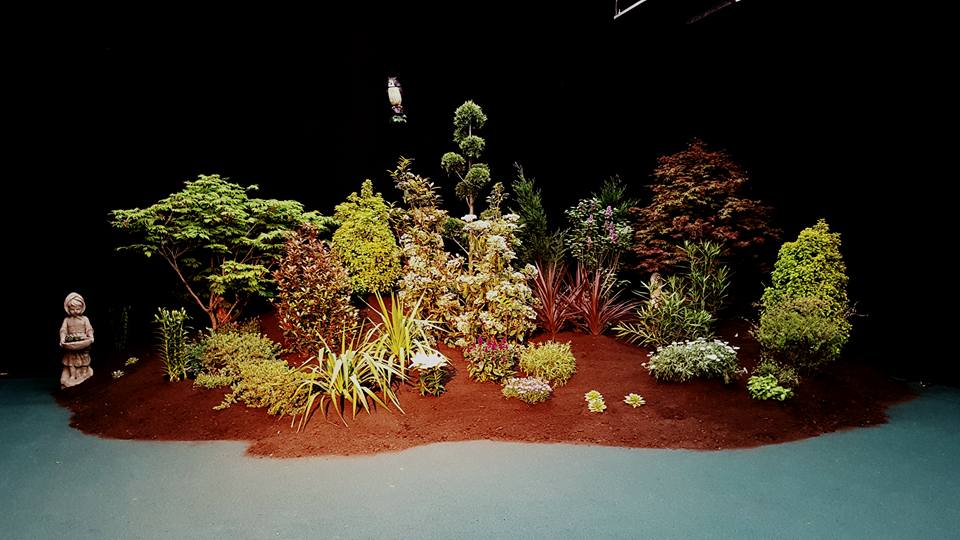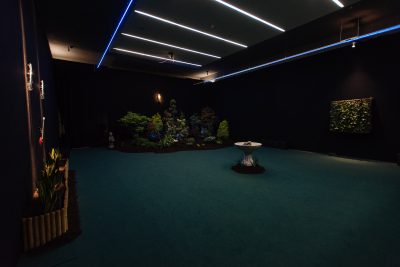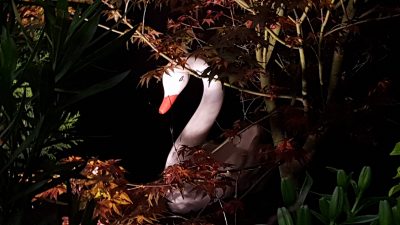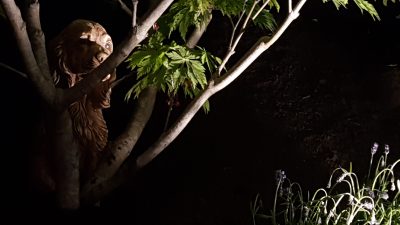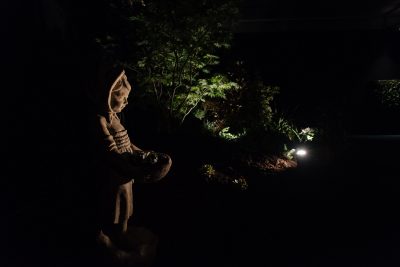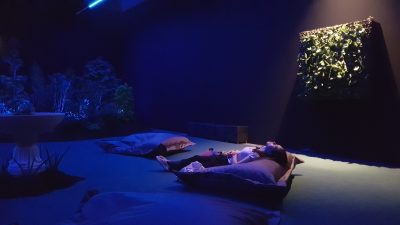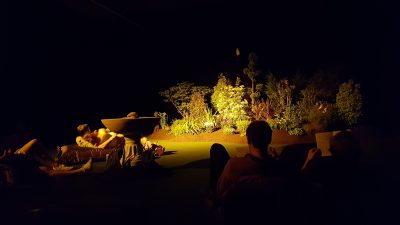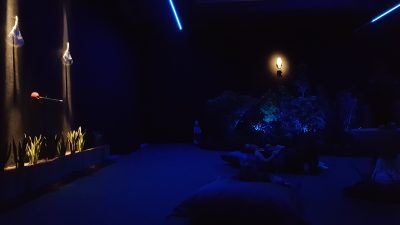Polysomnogarden (2016 – ongoing)
Installation utilising sleep study lab data
Plants, kinetic sculpture, LED lights, automations, sound, 6hrs 30mins
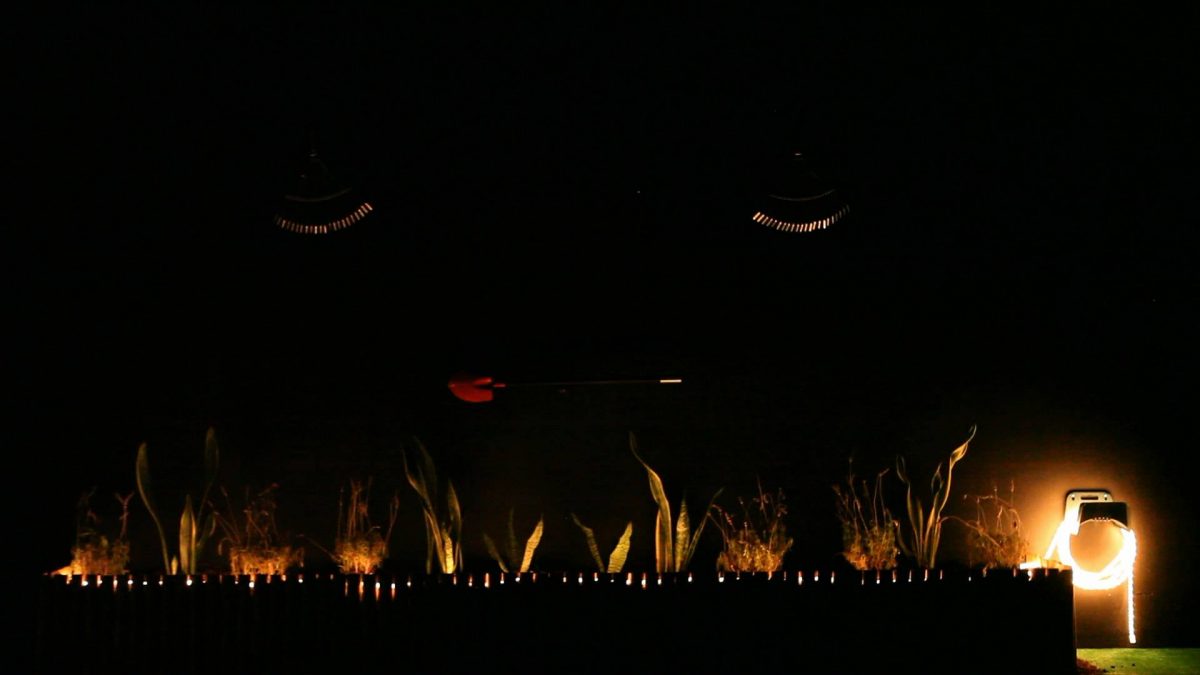
Artist’s Note: On The Opacity of Sleep
“Overlooking the gardens, the differences between habitual rhythms blur; they seem to disappear into a sculptural immobility…. But look at those trees, those lawns and those groves. To your eyes they situate themselves in a permanence, in a spatial simultaneity, in a coexistence. But look harder and longer. This simultaneity, up to a certain point, is only apparent: a surface, a spectacle. Go deeper, listen attentively instead of simply looking, of reflecting the effects of a mirror. You thus perceive that each plant, each tree, has its rhythm, made up of several: the trees, the flowers, the seeds and fruits, each have their time. Continue and you will see this garden and the objects (which are in no way things) polyrhythmically, or if you prefer symphonically. In place of a collection of fixed things, you will follow each being, each body, as having its own time above the whole. Each one therefore having its place, its rhythm, with its recent past, a foreseeable and a distant future.”
Henri Lefebvre, “Rhythmanalysis: Space, Time and Everyday Life”
Even at the seemingly idle state of sleep, our body is a symphony of oscillations, a polyrhythmia, where each organ pulsates in its own way producing valuable work for cell renewal, memory, learning and decision-making. Polysomnography or Sleep Study, is a medical method that identifies and evaluates multiple variables of the human body during sleep and helps prevent and cure diseases and disorders. By studying each body organ separately, it registers its rhythm; the repetitive motifs of our organs, which despite their idle pace, work ceaselessly during these 8 hours that we daily lose our consciousness. If one rhythm deregulates, there is a suspicion of disease.
Polysomnogarden borrows data from the lab, in order to create an environment that is transformed according to the stages of sleep. That is the actual sleep of the artist, who while unconscious has volunteered to the production of the long, unedited and mundane “narrative” called “one night’s sleep”. The method used essentially interprets the signals of bodily organs, notably brain waves, eye movement, heart rate, breathing, and the position of the body among others, into sound, light and kinesis, within a paradoxical interior garden, cut-off from the outside world. With the ‘participating’ plants possessing their own individual rhythms -despite their “sculptural immobility”-, the rhythms multiply and polyrhythmia reverberates inside the garden/ artwork.
Although science is the powerhouse behind the work, it’s at the same time rendered deliberately invisible, allowing more space for sensory perception to prevail. In this fictional landscape of interiority, the visitor is invited to observe and experience sleep as a rhythmic phenomenon and at the same time as an uncanny one, as a mystery, which the work does not wish to solve. As a medical method of ‘surveillance’, polysomnography, is able to effectively map and measure a sleeping body, yet, for better or for worse, it cannot pry into the unconscious mind. Sleep resists. Sleep is opaque. It’s firmly shut, as if nature itself foresaw a daily refuge of privacy, perhaps one of the last available today.
CREDITS
Sound Programming and Design: Coti K
Programming, Automations: Thanos Eleftherakos
Light Design: Tasos Paleoroutas
Architectural Supervision: Yannis Arvanitis
Garden Construction Advice: Olga Manetta
Sleep Science Advisor: Hara Tsekou
Commission and Touring support: Onassis Cultural Centre, Athens, Greece
In collaboration with the Sleep Study Clinic of Evangelismos hospital, Athens
THANKS
Christina Liata, Pasqua Vorgia, Konstantina Soulioti (OCC)
Prof. M. Vayiakis, Thanos Kallimanis (Sleep Study Lab of Evangelismos Hospital, Athens)
Odysseas Tsolkas, Dimitris Filopoulos
In loving memory of Hara Tsekou
Exhibitions
– Hypnos Project, Onassis Cultural Center, Athens, Greece, May 2016
– Donau Festival, Forum Frohner, Krems, Austria, 27-29 April 2018
Donau Festival, Museum Frohner Krems An der Donau – documentation video (April 2018)
Donau Festival Installation Shots (April 2018)
© Marina Gioti, David Višnjić/ Donau Festival
